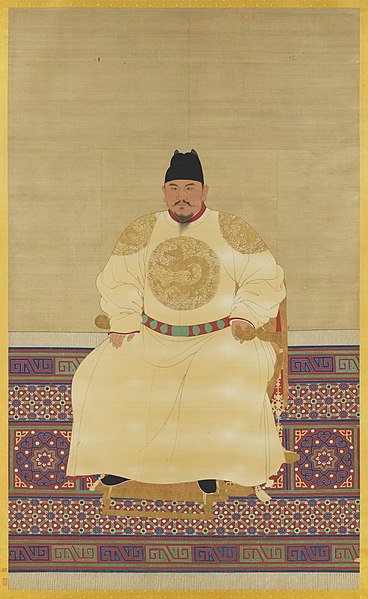The Haijin (海禁) or sea ban was a series of related isolationist policies in China restricting private maritime trading and coastal settlement during most of the Ming dynasty and early Qing dynasty. The policy introduced by the Ming founder Zhu Yuanzhang significantly hampered the growth of China's domestic trade, although the Ming was not able to enforce the policy in full despite official proclamations, and trade continued in forms like smuggling until the late Ming government opened the port of Yuegang for trade. Later, the early Qing dynasty's anti-insurgent "Great Clearance" (1661–1683) also caused considerable devastating effects on communities along the coast, until the Qing seized control of Taiwan and opened coastal ports to foreign trade.
Territory held (red) or influenced (pink) by Koxinga and his Ming partisans/pirates
The Ming dynasty, officially the Great Ming, was an imperial dynasty of China, ruling from 1368 to 1644 following the collapse of the Mongol-led Yuan dynasty. The Ming dynasty was the last imperial dynasty of China ruled by the Han people, the majority ethnic group in China. Although the primary capital of Beijing fell in 1644 to a rebellion led by Li Zicheng, numerous rump regimes ruled by remnants of the Ming imperial family—collectively called the Southern Ming—survived until 1662.
Portrait of the Hongwu Emperor (r. 1368–98)
The Great Wall of China: Although the rammed earth walls of the ancient Warring States were combined into a unified wall under the Qin and Han dynasties, the vast majority of the brick and stone Great Wall seen today is a product of the Ming dynasty.
A 17th-century Tibetan thangka of Guhyasamaja Akshobhyavajra; the Ming dynasty court gathered various tribute items that were native products of Tibet (such as thangkas), and in return granted gifts to Tibetan tribute-bearers.
Portrait of the Yongle Emperor (r. 1402–24)





